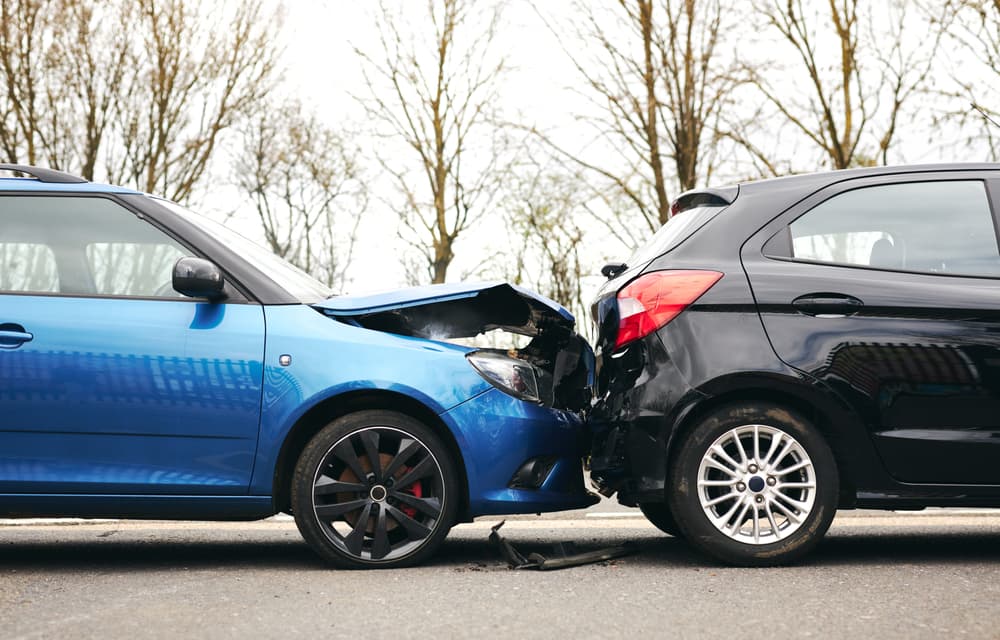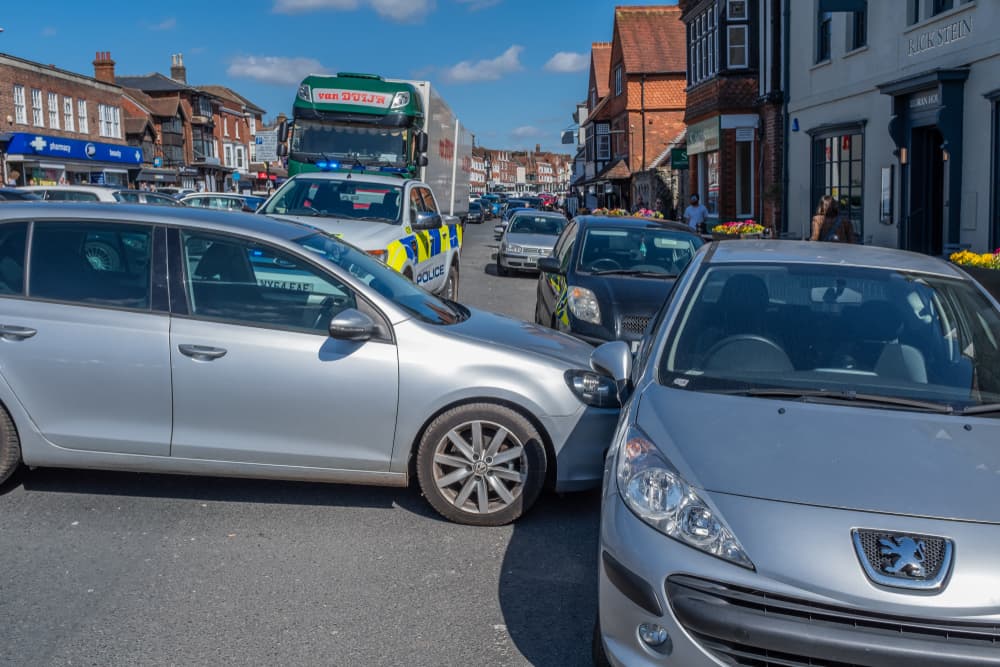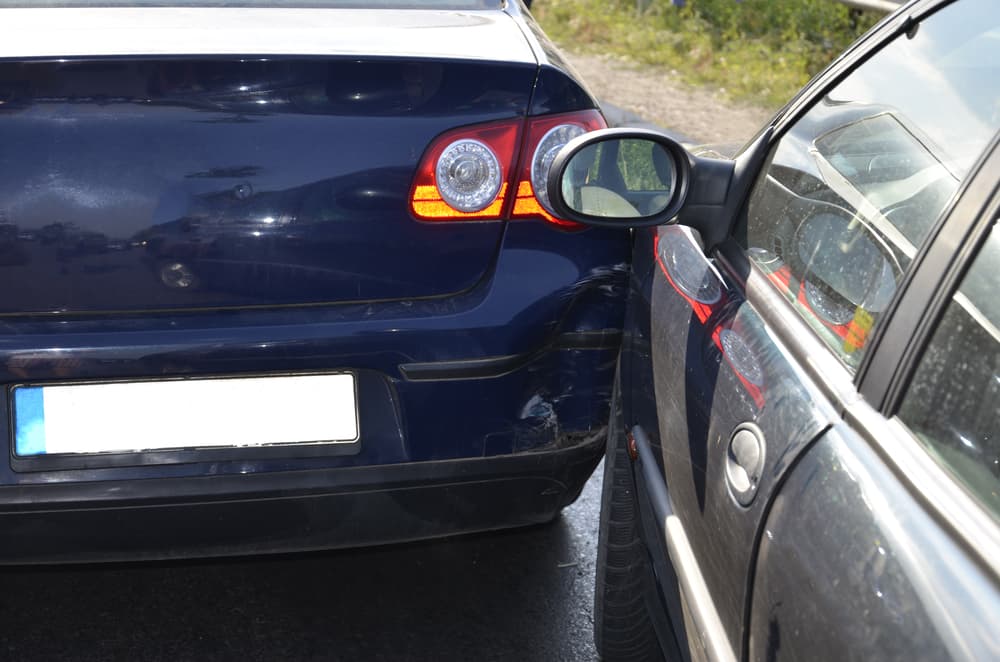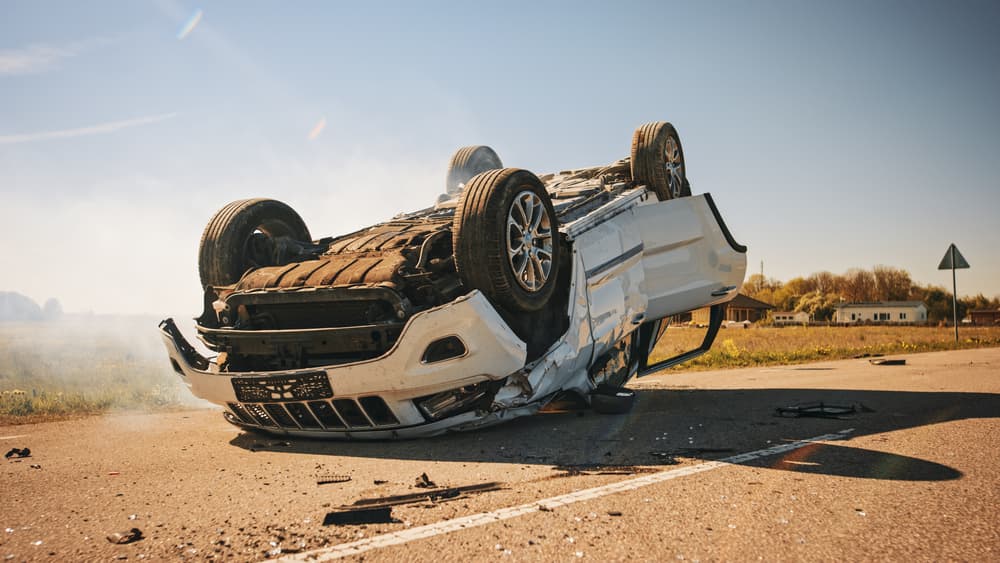The type of car accident a person gets into may affect the injuries they suffer and the parties they can hold responsible for those serious injuries. Different car accidents have various causes typically associated with those accidents and may have a rebuttable presumption of fault imposed on one of the drivers involved in the crash.
Identifying the type of car accident a crash victim has suffered begins a crash investigation and helps determine fault or liability for the victim’s injuries and losses. If you’ve been in a car accident, don’t hesitate to contact an experienced Florence car accident lawyer for skilled legal advice.
Rear-End Collisions

A rear-end collision happens when one vehicle’s front strikes another’s rear. Rear-end collisions typically occur at intersections when one car runs into the back of another stopped or slowing vehicle.
Rear-end collisions also occur in heavy stop-and-go traffic when drivers misjudge the pace of traffic. The force of the first collision can send a rear-ended vehicle into the rear of the vehicle ahead of it, causing a chain reaction of collisions.
Some of the leading causes of rear-end collisions include:
- Speeding: Exceeding the speed limit or driving too fast for conditions makes it less likely that a driver can slow down and stop in time to avoid a rear-end collision with a slowing or stopped vehicle ahead.
- Tailgating: Following another vehicle at a close distance means drivers have less space to slow down and stop their vehicle before rear-ending a vehicle ahead when that vehicle brakes.
- Aggressive driving/road rage: Aggressive or angry drivers pose a higher risk of causing a rear-end collision due to dangerous or reckless behaviors like speeding or tailgating. Some drivers may get angry enough to rear-end another vehicle intentionally.
- Distracted driving: Distractions such as checking a cell phone, changing the infotainment system, or reaching around the passenger cabin cause drivers to take their attention off the road. As a result, they may not see the vehicle ahead of them braking until too late to avoid a rear-end collision.
- Drowsy/fatigued driving: Tiredness can impair a driver’s perception and reaction times, which may cause a driver to fail to notice slowing or stopped traffic in time to avoid rear-ending a vehicle ahead.
- Intoxicated driving: Like drowsiness or fatigue, drug or alcohol intoxication also impairs perception and reaction times. Intoxication also lowers inhibitions, which may lead drivers to engage in risk-taking behaviors like speeding or aggressive driving.
Rear-end collisions can cause various injuries, depending on the speed at which the crash occurs. Common rear-end accident injuries include ligament sprains/tears, muscle and tendon strains/tears, and herniated spinal disc injuries.
Rear-end accident victims frequently experience whiplash since the force of the collision can cause occupants’ heads to jerk back and forth, causing minute injuries that can lead to whiplash symptoms.
In most cases, the driver who rear-ends the other vehicle will bear responsibility for the crash since drivers must leave enough space between themselves and the vehicle ahead to slow down and stop safely if the front vehicle brakes.
T-Bone/Side-Impact Collisions

A T-bone or side-impact collision occurs when the front of one vehicle strikes the side of another vehicle. T-bone accidents usually occur at intersections, although they can also happen when a vehicle tries to turn left across straight-traveling traffic to enter a driveway or side road.
Usually, the driver who did not have the right of way will bear responsibility for a T-bone accident, although other factors, such as speeding, can change the liability determination.
Common causes of side-impact collisions include:
- Disregarding traffic signs/signals: Running a red light/stop sign or yield sign may cause a driver to enter the path of oncoming traffic, where they might T-bone another vehicle or get T-boned themselves.
- Failing to yield the right of way: Drivers turning left at an intersection or entering a side street or driveway must yield the right of way to oncoming traffic traveling straight. Misjudging whether sufficient room exists to complete a left-hand turn can lead to a T-bone collision.
- Failing to use turn signals: Side-impact accidents can occur when a left-turning driver fails to signal their turn. When other motorists don’t expect the driver to turn left, they may get into a T-bone accident with that driver.
- Speeding: Exceeding the speed limit or driving too fast for conditions can contribute to side-impact collisions, including when drivers fail to approach intersections with caution or when speeding drivers make it difficult for left-turning motorists to judge the distance of oncoming traffic.
- Distracted driving: A distracted driver may run through a stop sign or red light or fail to notice other traffic with the right of way.
- Drowsy or intoxicated driving: Fatigue or drug/alcohol intoxication may cause motorists to miss traffic signs/signals or notice oncoming or crossing traffic.
Because many vehicles have less crash protection on their sides, occupants of the vehicle that gets T-boned can suffer severe injuries, including broken bones, neck and back injuries, internal injuries, and traumatic brain injuries.
Head-On Collisions

A head-on collision occurs when the front ends of two vehicles crash together. Head-on accidents represent some of the most dangerous, catastrophic types of motor vehicle accidents since two vehicles running into each other at full speed can create violent forces that lead to severe, life-altering injuries.
Some of the most common circumstances that lead to head-on collisions include:
- Drifting over the centerline or median into the path of oncoming traffic
- Entering the wrong side of the road when traveling through an intersection
- Traveling the wrong way down a one-way street or access ramp
Distracted, tired, or intoxicated driving can lead to circumstances that put drivers at risk of head-on collisions. Crashes may also occur when drivers get confused by traffic patterns and end up on the wrong side of the road.
Sideswipe Collisions

A sideswipe collision occurs when the side of one vehicle bumps or scrapes along the side of another vehicle. Sideswipes most frequently occur on the highway when one vehicle either drifts out of its lane or a driver attempts to move into a lane already occupied by another vehicle.
Some of the most frequent causes of sideswipe accidents include:
- Reckless driving: Reckless driving behaviors like swerving through traffic may lead a motorist to sideswipe another vehicle.
- Passing a vehicle in the same lane: Traffic laws require motorists to move over to an adjacent lane (if legal to do so) to pass other vehicles. Sideswipes can occur when drivers pass other motorists with their vehicles still partially in the same lane as another vehicle.
- Not using turn signals or mirrors: Failing to use turn signals or check mirrors before changing lanes may lead to drivers entering a lane already occupied by another vehicle.
- Distracted, fatigued, or intoxicated driving: A distracted, tired, or intoxicated driver may slowly drift out of their lane and sideswipe a vehicle in an adjacent lane.
Depending on the force of a collision, a sideswipe accident may only cause vehicle damage. However, more violent collisions can cause neck and back injuries like whiplash or spinal disc herniations. However, a sideswipe collision can cause a driver to spin out of control and strike other vehicles or objects on the side of the road, like medians/guardrails or signposts/lampposts.
Rollover Accidents

A rollover accident occurs when a vehicle flips onto its side or roof or tumbles over multiple times. Rollover accidents can cause life-threatening injuries, especially if a vehicle’s roof collapses in the crash.
Vehicle occupants may strike their heads or suffer spinal column compression, which can lead to severe traumatic brain injuries or spinal cord injuries and paralysis.
Rollover accidents can also damage vehicle components and cause vehicles to catch fire. A rollover can trap vehicle occupants inside, where they may suffer burns and smoke inhalation injuries from the fire.
Rollover accidents can occur due to violent collisions between vehicles that can flip cars or send them tumbling end-over-end. Other factors, such as tire/brake failures, potholes, slick road surfaces, or debris, can trigger rollovers when drivers swerve and lose control of their vehicles.
Drunk Driving Accidents
Crashes involving intoxicated drivers can result in severe injuries since drug or alcohol intoxication makes motorists more likely to speed or engage in reckless driving.
Impaired perception and reaction times also mean intoxicated drivers brake or swerve late (or not at all) and hit other vehicles or road users at higher speeds.
Intoxicated drivers usually bear liability for auto accidents as the law may hold them negligent per se, or negligent because they broke the law during the accident. However, depending on the circumstances leading up to a crash, another driver may bear responsibility for causing the crash.
Hit and Run Accidents
The law requires motorists involved in a collision with another vehicle, road user, or stationary object to stop or immediately return to the scene. Motorists must render aid to anyone injured in the collision and exchange insurance information with the other drivers or road users involved in the collision or with the owner of the property that the motorist hit. If the motorist cannot locate the property’s owner, they must leave their information at the scene.
A hit and run accident occurs when a driver leaves an accident scene without stopping to render aid or provide their information.
Drivers may flee a crash because they don’t have insurance or the financial resources to pay for property damage or injuries, or they fear getting involved with law enforcement at the accident scene due to drug/alcohol intoxication, severe injuries or fatalities suffered by accident victims, or active arrest warrants.
Accident victims who cannot identify and locate a hit and run driver at fault for the crash may pursue financial recovery from the victim’s auto insurance policy if they’ve purchased uninsured motorist coverage.
Uninsured/Underinsured Motorist Accidents
Some motorists drive without an active auto liability insurance policy as state law requires. Even when drivers have liability insurance, they may have purchased the minimum coverage limits required by law. Serious auto accidents can cause injuries and property damage that may quickly deplete an at-fault driver’s insurance coverage if they purchased minimal coverage.
Victims of accidents caused by drivers with little or no liability coverage may have the option of turning to their insurance provider to file an uninsured/underinsured motorist claim if the victim (or their policyholder) has purchased uninsured or underinsured motorist coverage.
With uninsured/underinsured motorist coverage, an accident victim’s insurance provider steps into the shoes of the at-fault driver’s insurance to compensate the injured victim for the same financial and personal losses they have the right to recover from the at-fault driver.
Rideshare Accidents
Accidents caused by drivers working for rideshare companies may involve an extra layer of complexity. Most states’ laws require rideshare companies (or their drivers) to carry insurance coverage different from that required for drivers of personal vehicles.
The coverage limits for this insurance usually vary depending on the driver’s status at the time of the crash, such as if a rideshare driver has accepted a ride request or has a rideshare passenger in their vehicle.
While required coverage limits usually equal those required for personal vehicles when a rideshare driver has logged into the network and made themselves available for a ride request, required coverage limits can increase to $1 million-plus when a driver has accepted a ride request or has a passenger.
Getting Legal Help Can Make a Difference After an Accident
The type of car accident an injured person has gotten into can affect various aspects of their car accident claim, including the severity of injuries they’ve suffered, the amount of their financial and personal losses, and the party or parties who may bear liability for those injuries and losses.
Working with an experienced car accident lawyer can give an injured party a better chance of recovering the compensation they need for medical bills, car repairs, and lost income.
An attorney can help a car accident victim deal with insurance companies that may try to deny or minimize the injured victim’s claim. A knowledgeable personal injury lawyer in Florence can investigate the car accident, obtain evidence to build a compelling legal case, and pursue financial recovery through a settlement or, if necessary, in court.
